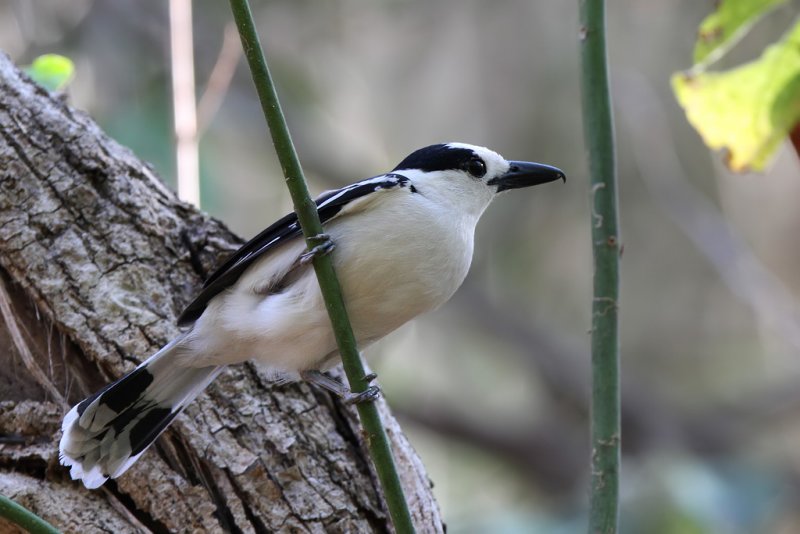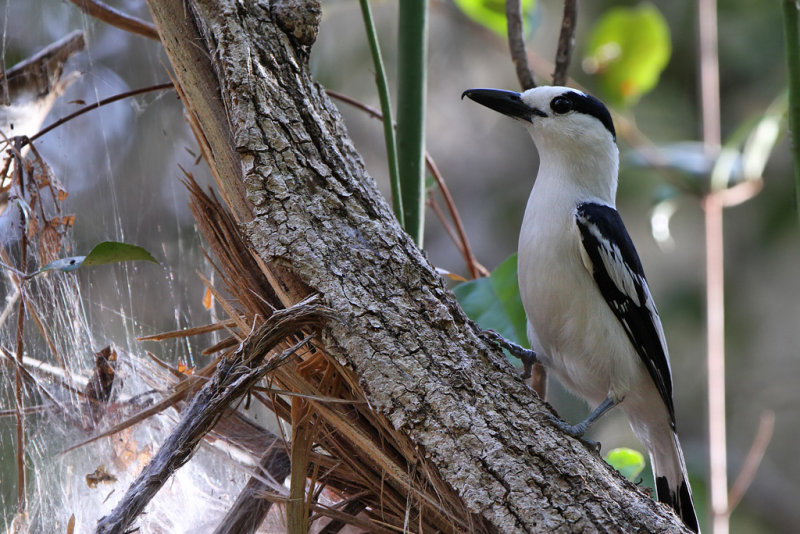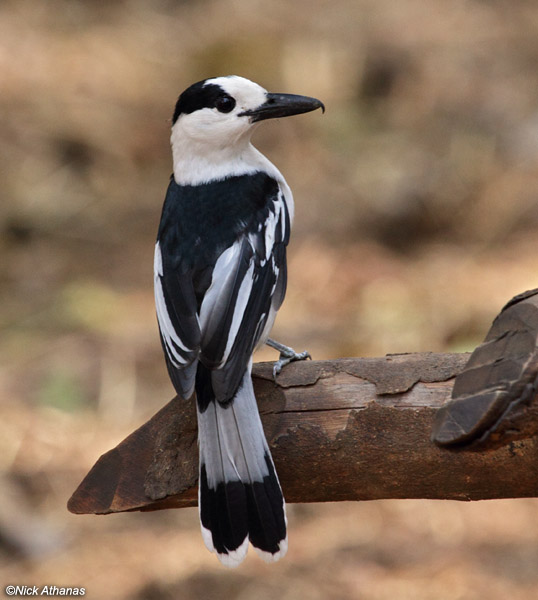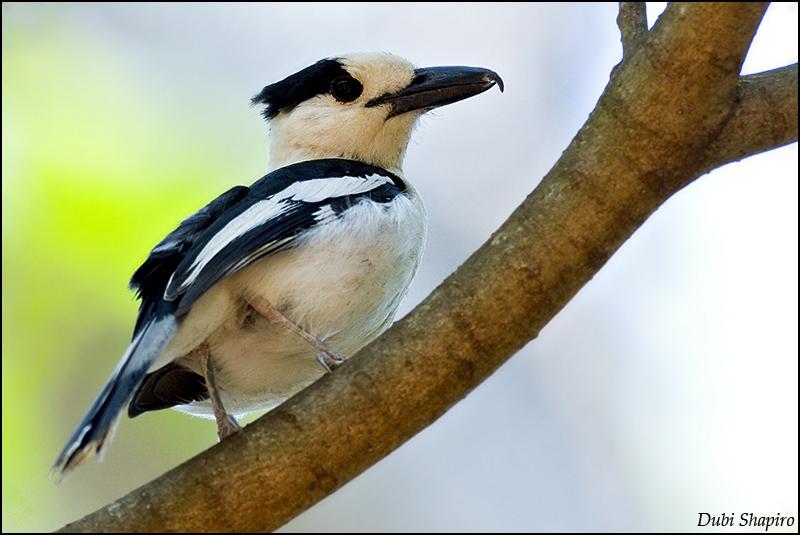
Vanga curvirostris
TAXONOMY
Vanga curvirostris Linnaeus, 1766. The hook-billed vanga is in
a genus of its own. There are two subspecies, the nominate,
which is widely distributed in rainforest and west of Madagascar,
and V. c. cetera, limited to the southern spiny forests.
OTHER COMMON NAMES
French: Vanga йcorcheur; German: Hakenvanga; Spanish:
Vanga de Pico Curvo.
PHYSICAL
CHARACTERISTICS
The hook-billed
vanga has a slim
body, short wings,
long tail, a long
neck, a relatively
heavy head, and a
thick black bill.
Male, female, and
juvenile are similar.
The underparts are
pure white, the head
has a black napeband.
The mantle is
also black, with wide
pale fringes to the
greater and median
coverts. The base of
the tail is pale gray.
DISTRIBUTION
The hook-billed
vanga occurs all over the east in plantations not too far from
primary forest, gardens, lowland, and mid-altitude forest. It is
relatively scarce in rainforest. It is absent from the high plateau
except in large areas of primary forest. In the west and south it
is more common, especially in the fringes of primary deciduous
and spiny forest.
HABITAT
In the east, the hook-billed vanga is largely a bird of forest and
forest edge, though occasionally found some way from the forest.
In the west, it is found most commonly in dense forest,
particularly around regenerating gaps.
BEHAVIOR
The hook-billed vanga is often difficult to find, as it feeds high
in dense vegetation. The song is a short high single whistle,
very difficult to locate. Imitiation of the song will often bring
the bird flying in overhead to investigate, as they are very territorial.
They do not really follow mixed-species flocks, but they
are sometimes seen on the periphery of groups. They are usually
seen in pairs, although the couple may be widely separated.
FEEDING ECOLOGY AND DIET
The hook-billed vanga forages mostly in dense vegetation
where it will tear open leaf-clumps or loose bark in search of
invertebrates. When looking for chameleons, the hook-billed
vangas move rapidly through the understory, hopping from
vertical stem to vertical stem, looking intently for the shapes of
chameleons. Hook-billed vangas take prey up to the size of a
medium-sized chameleon or a bird or bat.
REPRODUCTIVE BIOLOGY
The pair constructs a nest in the fork of a tree, often quite low
down, and the female lays in it two or three whitish or reddish
eggs. Pairs seem to be very territorial, and singing birds from
adjacent territories may end up fighting or loudly bill-clapping
at each other.
CONSERVATION STATUS
Not being limited to primary forests and having a wide
DISTRIBUTION
,
the hook-billed vanga is not considered threatened.
SIGNIFICANCE TO HUMANS
None known.
Photo Gallery of - Hook-billed vanga




 Animalia Life
Animalia Life